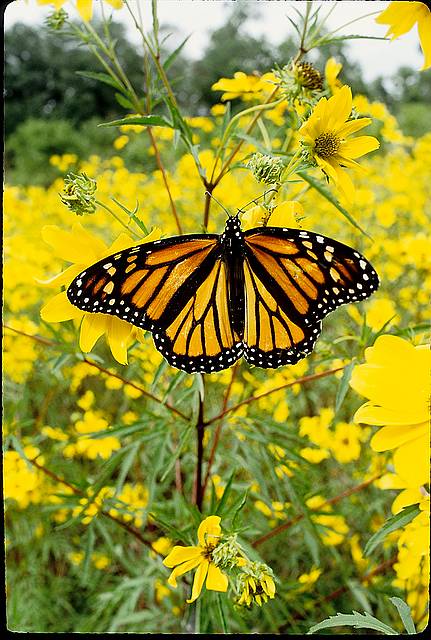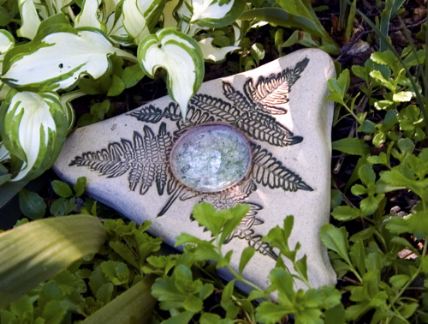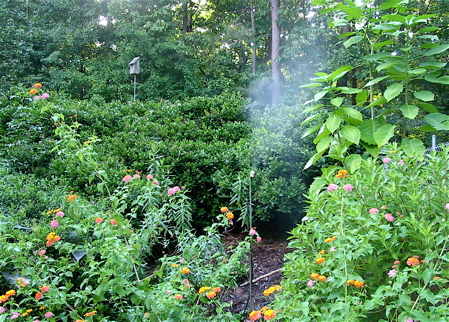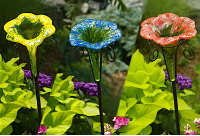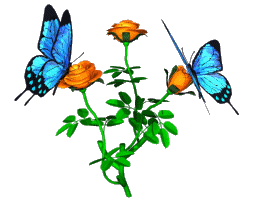-
use butterfly feeders along with leaf misters
Enticing butterflies has become a huge past-time for many gardeners and backyard birders alike. Earning nicknames like “flying flowers” and “winged jewels” these graceful beings bring joy and delight to many with their sheer presence. But what really works to bring butterflies to your place? There’s butterfly houses, and butterfly feeders, and butterfly baths, and puddlers too!
Although I’m no expert, during summer months you’ll find daily butterfly activity in our garden that’s pretty amazing. We have no butterfly house, nor do we use a feeder. The secret is a leaf mister and flowers which provide food in the form of nectar. Host plants are extremely important too – this is where butterflies lay their eggs. Host plants also provide a food source for the emerging caterpillar. Be forewarned though…heavy munching will occur on your host plants.
We see mostly Monarchs and Swallowtails, and Milkweed serves as the host plant. Lots of native shrubs and flowers entice butterflies and keep them around all season. Mature White Fringe Trees line the back yard, Service Berry shrubs sit in the front, Columbine, Trumpet Vine, Native Hibiscus, and Bottlebrush are just a few other plantings around the yard.
Butterflies do adore over-ripened fruit like bananas, oranges, melon and pears, but you must be sure the fruit does not mold. Butterfly puddlers are popular too, but it’s rare that they’ll drink from an open water source. Instead, the clay absorbs the water, and butterflies will sit upon the dampened clay surface. If using a but
terfly feeder, it should have a wick to absorb and draw up nectar from the basin, as butterflies will eat from the wick.
This season create a butterfly habitat by planting a few native species that will help them thrive and flourish. Add a leaf mister and you’ll see the increase in activity. If you build it… they will come!
Our summer butterfly habitat - Bats & Butterflies, Bird Accessories, Butterfly Feeder, Misters and Birdbath Drippers, Uncategorized
Butterfly Feeders & Other Enticements
Entice butterflies to your yard with butterfly feeders and these simple tricks:
Butterfly feeders, either nectar or fruit can crafted pretty simply with household items. Over-ripe fruit (like bananas, melons or oranges) may be placed on a saucer and set on a tree trunk or stake. They’ll attract fruit flies, which butterflies consume for protein too. To hang butterfly feeders, use sisal rope or twine with a grapevine wreath for the base. The secret is sunny locations as butterflies love warm sun. If using nectar in a shallow bowl, add a sponge (a new one) to absorb the liquid as butterflies will consume the nectar in this fashion. Also, no need to purchase nectar, it’s the same solution used for hummingbirds. 1 Part sugar to 4 parts water. Never use anything but plain table sugar. Boiling is not necessary, but helps to dissolve the sugar more efficiently.
Water is another attractant, but butterflies won’t drink from an open source. Leaf misters are great, as they leave tiny puddles around where the mist falls. Butterflies will flit in and out of the gentle spray.
Using a waterless pond will attract the flying flowers too. Simply gather heat-absorbing rocks and place them on their side in a sunny location. Design a small circle, square, or free-form with rocks close together, an inch or two deep. Add sand and salts and keep moist to further attract butterflies. Line the area with plastic to keep the salts from seeping into your soil.
When placing feeders, misters, or rock baths, it’s best to have them in, or in close proximity to your butterfly garden. Use host plants and nectar plants for best results.
- Bats & Butterflies, Bird Accessories, Butterfly Feeder, Butterfly Houses, Misters and Birdbath Drippers, Uncategorized
Create a Habitat Along with Your Butterfly Feeder
Milkweed is a great, natural butterfly feeder, and so are nectar feeders. The sugar water recipe is the same as hummingbirds’ but butterflies will not use these feeders. Nectar feeders may be open, or have a sponge in them to absorb the liquid. A small dish works well, set on a porch rail, or hung from a shepherd’s hook or branch. Over-ripened fruit is adored by butterflies too, just be sure it does not mold.
Sadly, natural butterfly habitats are being decimated by the elimination of weeds and native grasses from yards, and chemical pesticides. Create a butterfly habitat in your garden with these simple tips:
Water: Butterflies will not drink from an open water source. They consume liquids by puddling, getting moisture from wet sand or soil, or shallow puddles. A leaf mister is a wonderful accessory to attract butterflies as the puddling process is constant.
Shelter: Mature, woody plants near your nectar producing flowers will provide butterflies with shelter during bad weather and at night. You may also want to consider a butterfly house.
Host plants: The host plants are ones that provide a site for butterflies to lay eggs and a food source for the emerging caterpillar. You may need to keep heavy mulch on these plants. Some host plants include: Thistle, Milkweed, Wild Cherry, Grasses, Nettle, Violet, Poplar, and Willow.
Food Sources for Nectar: Include Shrubs and annual flowers like; Azaleas, Lilac, Viburnums, Privets, Impatients, Marigolds, Alyssum, Cosmos, Verbena and Zinnias. Perennials include: Bee Balm, Butterfly Weed, Phlox, Seedum, Goldenrod, Coneflower, Thistle and more.
Start creating your butterfly-friendly habitat this spring and enjoy these flying flowers’ who will grace your yard!

